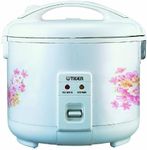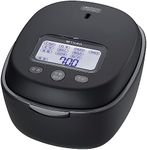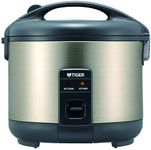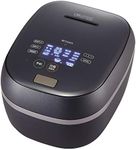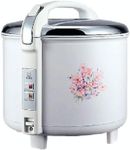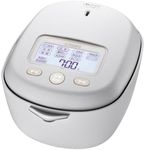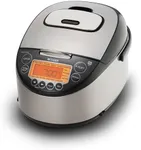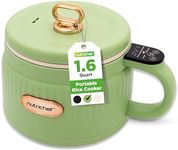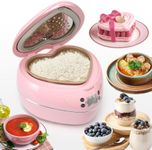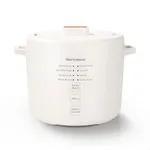Buying Guide for the Best Tiger Rice Cookers
Choosing the right rice cooker can make a significant difference in your cooking experience, especially if you enjoy rice as a staple in your diet. Tiger rice cookers are known for their reliability and advanced features, but it's important to understand what specifications to look for to ensure you get the best model for your needs. Here are some key specs to consider when selecting a Tiger rice cooker.CapacityCapacity refers to the amount of rice the cooker can prepare at one time, usually measured in cups. This is important because it determines how much rice you can cook in one go. Rice cookers typically range from 3 cups to 10 cups. If you have a small household or live alone, a smaller capacity (3-5 cups) might be sufficient. For larger families or if you often entertain guests, a larger capacity (6-10 cups) would be more appropriate.
Cooking FunctionsCooking functions are the different settings and programs available on the rice cooker. These can include options for white rice, brown rice, porridge, slow cooking, steaming, and more. This spec is important because it adds versatility to your cooking. If you only need to cook basic white rice, a model with fewer functions will suffice. However, if you want to experiment with different types of rice or use the cooker for other dishes, look for a model with multiple cooking functions.
Inner Pot MaterialThe inner pot material affects the cooking performance and durability of the rice cooker. Common materials include non-stick coating, stainless steel, and ceramic. Non-stick pots are easy to clean and prevent rice from sticking, but they may wear out over time. Stainless steel is durable and can handle high temperatures, but it might require more effort to clean. Ceramic pots offer a natural cooking surface and are generally easy to clean, but they can be fragile. Choose based on your preference for ease of cleaning and durability.
Heating TechnologyHeating technology refers to how the rice cooker heats the rice. Basic models use conventional heating, while advanced models use induction heating or micro-pressure technology. Conventional heating is straightforward and effective for simple rice cooking. Induction heating provides more precise temperature control and even cooking, ideal for those who want perfect rice every time. Micro-pressure technology can enhance the texture and flavor of the rice. Consider how much control and quality you want in your rice cooking when choosing the heating technology.
Ease of UseEase of use encompasses features like intuitive controls, clear displays, and user-friendly interfaces. This spec is important because it affects how convenient and enjoyable the rice cooker is to use. Look for models with simple, easy-to-read buttons and displays if you prefer straightforward operation. If you enjoy tech gadgets, you might appreciate models with advanced features like touch screens or smartphone connectivity. Choose based on your comfort level with technology and how much convenience you want.
Cleaning and MaintenanceCleaning and maintenance refer to how easy it is to clean the rice cooker and keep it in good condition. This is important because it affects the longevity and hygiene of the appliance. Models with removable inner pots and lids are easier to clean. Non-stick surfaces can simplify cleaning but may require gentle handling to avoid damage. Some models have self-cleaning functions or dishwasher-safe parts. Consider how much time and effort you want to spend on cleaning when choosing a rice cooker.
